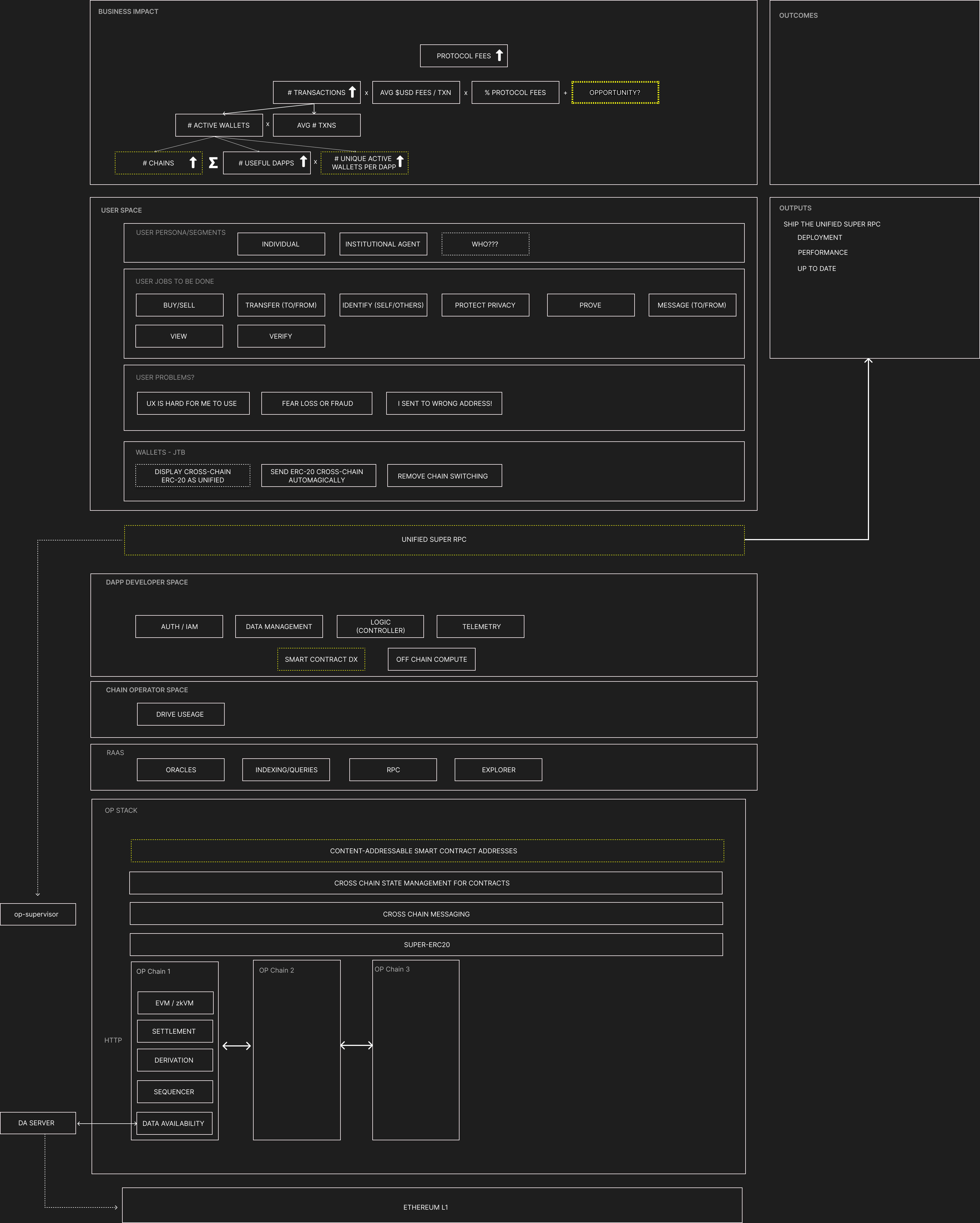Capturing Value in Web3
Web3 has opened up lots of layers.
I don't think there is yet an OSI type model, although at some point it should. It did start with Layer 1 being the final settlement layer, and in the case of Ethereum Layer 2 is the roll up which should support faster transactions.
But there are a bunch of different components.
I mapped the following while thinking about the Superchain:

Let's simplify and look at the existing Internet and see from those basic primitives who the winners have been.
At the Internet level, it is Compute, Storage and Networking.
In the original era of the Internet, all three of those "big iron" type solutions went to incumbents like HP, Dell, and Cisco...and maybe the Data Centers fit somewhere in there.
The core underlying hardware-based primitives had lots of competition, declining margins in the case of Storage, particularly.
On top of those were a handful of profitable applications: SAP and Oracle for ERP, big CRM providers; and a bunch of "middleware" software to enable software, like databases was, and continues to be a big business, and the middleware, and underlying "stuff" for Network and Security tools.
But from all this, as the Internet opened up the network, who actually won?
I think those selling the picks and shovels did, to some degree, till they got disrupted by the Cloud.
The biggest enterprise application to start to take advantage at the application space was Salesforce, which ushered in a whole new set of applications, SaaS.
These did a few things well which opened their TAM and made it one of the greatest wealth-creation sectors:
- Allows CFO's to remove hardware costs from CapEx and turn to OpEx;
- Allow line of business to get up and running with minimal dev work, which typically went to the big, expensive System Integrators to get these kludgy systems up and working;
- Shrink price points, expanding the TAM as creating SaaS reduced CAC to a "by the seat" business;
- Niche down into extremely focused user stories as a point of entry
So who were some of the big winners from this? (Off the top of my head, I'm sure there's a better resource, but this here: Give me a list of the biggest SaaS winners by market cap.
Companies that disrupted enterprise applications:
- Atlassian
- Workday
- Salesforce.com
- Docusign
Companies that leveraged this shift:
- Okta
- ??
But what else emerged as computing become more commoditized with Cloud?
By commoditized, the stack became more open source.
Imagine if many of these profitless companies at scale had to pay Windows licensing for every server?
They'd be dead.
The LAMP Stack and Ruby on Rails frameworks allowed companies to spin up web applications quickly and scale affordably.
Who really took advantage of this?
- Netflix
- Amazon.com
- AirBnB
These were the applications which scaled, acting as Aggregators of demand.
Who also benefitted from the commodification providing picks and shovels?
- AWS
- Cloudflare
- ....?
Does Web3 Change things?
The big promise of Web3 is that everything, specifically the infrastructure, can be "decentralized" -- meaning no single large company such as a cloud provider can be the primary rent seeker.
Being very clear on who benefits and captures the value is important, particularly for those who are crafting their career and leading products.
Now, in the Web2 world, FAANG drives everything; but lots of companies did very well even if they aren't FAANG, so the purpose of this isn't to say everything is pointless unless its a FAANG.
LinkedIn isn't often listed as a FAANG; but it has similar dynamics and great economics and moats.
Uber is successful, considered up there with FAANG.
(Make a clearer distinction or definition of who are winners)
I do think it is worth understanding what the dynamics are for the next generation of FAANG (which could be FAANG themselves -- I think leaders are more knowledgeable now of the market dynamics than, say the HP'ers were compared to current day Google, Facebook and AWS); but still.....
It does seem that, in general (and I think this is a good thing), even for the best enterprise segments, consumers and owning consumer demand still seems to be the strongest position.
This is very hard to do. But whoever can own the demand across enterprises and consumers will win.
Facebook, AWS, and Google
Facebook, AWS/Amazon and Google both own across the ecosystem.
The reason I am putting this shorthand here is to frame: who will be able to emerge from web3 in a similar position?
Facebook own consumers -- people who rely on the utility for sharing news and photos and messages. But, as a result, they have been able to reach into the large SMB and Enterprises for their ad platform. They have valuable distribution.
Amazon/AWS: AWS is the infrastructure provider for valuable technology; their competence is in spinning up all the primitives needed to build "Web2" applications. As a result, they have SMB + Enterprise; Amazon, distinct and separate, captures consumers.
Google: captures consumers through search; and as such, brings in SMB + Enterprise for their advertising for companies that want this demand.
Web3 Opportunities
Working backwards from this, it seems that some part of the winning business must be the one that captures directly the eyeballs and attention of users.
For example, AWS couldn't say that, when Netflix was running on them, that they had access to eyeballs via proxy; by building their own infrastructure, Netflix could retain those eyeballs and lower their own costs.